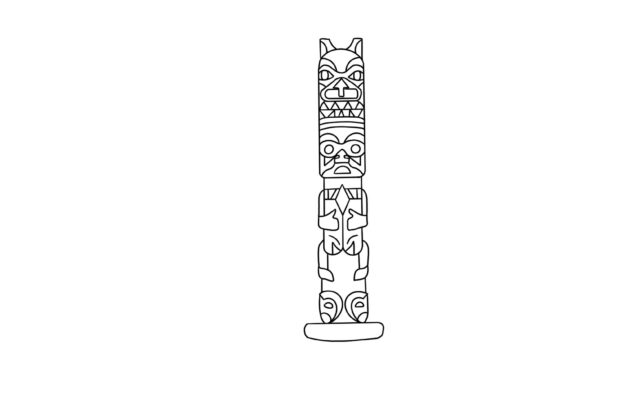Construction of mine over Indigenous massacre site

John Gast’s renowned 1872 painting, “American Progress,” tells the narrative of early American settlers spreading across the continent, extracting resources from its soil. Simultaneously, the painting illustrates the displacement of Native American peoples being pushed off the canvas in the name of progress. Although the era of “Cowboys and Indians” has long faded, tensions still persist between the U.S. government’s pursuit of what it deems progress and its impact on the native communities inhabiting the land.
From the initial quest for gold in 1492 to the 19th and 20th-century dominance of oil, often dubbed “black gold,” propelling the world into the industrial era, the 21st century brings a new focus on green energy. Lithium, often referred to as “white gold,” which has assumed a central role in the government’s goal of energy sustainability. This element is not only pivotal for simple batteries and cell phone parts, it also is a major asset to the green and alternative energy movement, serving as a primary component in electric car batteries.
In the rural dry desert of Humboldt County, Nevada, lies the contentious Thrackers Pass mine, situated near the northwestern Nevada-Oregon border, around the small towns of McDermitt and the Fort McDermitt Paiute and Shoshone Indian Reservation. Currently recognized as the largest lithium deposit in the United States, the mine, operated by Lithium Americas and its subsidiary Lithium-Nevada, has become the focal point of a heated cultural dispute involving two various Native tribes [Burns Paiute Tribe, Reno Sparks Indian Colony] along with other environmental organizations.
While starting pre-construction activities in March 2023, the project faced staunch opposition from indigenous communities and environmental groups. Opponents of the project argue that Thrackers Pass holds spiritual and cultural significance, with claims and evidence asserting the site’s association with a September 12, 1865, massacre carried out by the first Nevada Calvary. The legacy of this massacre gave the Thrackers pass site the infamous name, Peehee Mu’huh, which means “Rotten Moon” in the Paiute language.
The Ox Sam camp, a band of protesters named in honor of one of the massacre’s survivors-Ox Sam, has emerged as a prominent voice against the project. Shalese Dero, a 6th generation direct descendant of Ox Sam and member, underlines the historical trauma and atrocity that was committed: “Ox Sam was one of those three survivors that actually cut the back of a teepee to escape from what was happening.” Dero said.
Dorece Sam Antonio, an original member of the Ox Sam camp, recalls their initial demonstration at the mining grounds in May 2023. Pitching a Teepee on the waterline to disrupt the mine’s access to water, the group faced legal opposition and raids to their demonstration set ups. “They literally threw everything into a pile. Tents, they broke up the poles, they took down the Teepee. when they raided the camp, they got everything and just threw it in the back of my flatbed trailer,” Antonio said.
Despite the blocking demonstrations and temporary restraining order given out to protesters “They have prohibited us to go to our sacred land sites.” Dero said. Legal allegations made by the two tribes suggest that the Bureau of Land Management (BLM) failed to disclose information crucial for recognizing Thrackers Pass as a national historical landmark. “BLM also failed to identify at least four historic properties, all of which are eligible for inclusion on the National Register of Historic Places, that local Indian tribes consider sacred and culturally significant. BLM possessed records of three of those four properties for many years prior to this lawsuit,” Dero said. The two Native tribes lost a recent case in a Nevada federal court, but an ongoing appeal in the 9th Circuit Court of Appeals seeks to block the mine’s construction.
Although multiple legal attempts to block the construction of this mine have been prevented, the Ox Sam group turns to a potential tiny ally as one of their last hopes, pitting the Kings River Pyrg, a currently unprotected snail the size of a pinky fingernail, that the industrial grade mining drills would endanger. The Western Watersheds Project, a conservation group working in tandem with the two native tribes’ lawsuit against the mine, submitted a petition to the United States Fish and Wildlife Service (USFWS) to investigate measures for protecting these snails and subsequently the Thrackers pass as a whole. Talasi Brooks, a legal representative for the Western Watersheds Project, emphasizes the vulnerability of the snail. “This tiny little spring snail that’s known to exist only in certain springs that are near the Thrackers pass project. The springs that it exists in are really, really shallow and [the snail] may be affected by the changes to water quality that are anticipated to occur,” Brooks said.
As the battle intensifies with legal setbacks and ongoing appeals, the fate of Thrackers Pass could now lie on the resilience of a tiny snail. The snail represents the only hope that the tribe has of preserving their land, “Hopefully this little thing is mighty,” Antonio said.



